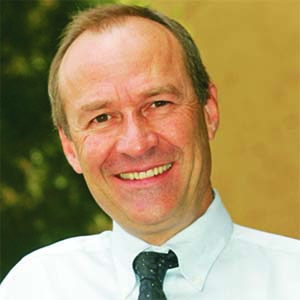It was an emotional farewell. Draped in the brilliant yellow, blue and green flag of his homeland, Felipe Massa waved a heart-felt ‘good-bye’ to his fans following the 2016 Brazilian Grand Prix – his last-but-one before retirement.
 By Graham Duxbury
By Graham Duxbury
He had carefully chosen this moment and this venue. The Autódromo José Carlos Pace in São Paulo was where he spent his younger years honing his racing skills in karting before breaking into the fast-paced world of Formula One. But now the adventure was coming to an end, after 11 GP wins and 41 podium finishes. Or was it …?
The shock retirement of Nico Rosberg and the transfer of Felipe’s teammate Valtteri Bottas to Mercedes-Benz, resulted in a swift recall by his Williams team for a fourth consecutive season.
For Massa, whose retirement must be one of the shortest in F1 history, the question is will he regain the lofty heights to which his career once took him?
Felipe is not the first driver to have returned to the F1 fold following retirement.
World champion Niki Lauda suddenly turned his back on the sport after stepping from his Brabham race car during practice for the 1979 Canadian GP. He wished to retire immediately, he stated, as he had lost “the desire to drive around in circles”.
Then, in 1982, when his Lauda Air charter business flew into financial trouble, he decided on a comeback. His seat at the McLaren team was by no means guaranteed as his contract was littered with ‘performance clauses’. If he did not cut the mustard, Niki would be out. But the Austrian was able to regain his form – and former glory – winning his third world title in 1984.
The great American, Mario Andretti – F1 world champion in 1978 with the Lotus team – discovered that retirement was “a lot easier than it could have been” (his words) after a frustratingly unsuccessful 1980 spent grappling with the recalcitrant “ground-effects” Alfa Romeo.
Nevertheless, despite his apparent disillusionment, he did return to F1, initially with Williams and then Ferrari, replacing the seriously injured Didier Pironi for the last two races of 1981. One of them was the Italian GP at Monza where he took pole position and finished third in the race, thus leaving F1 as a bona fide Italian hero.
For Alan Jones, the seeds of his retirement were sown soon after he won his world championship title in 1980. Together with the Williams team he had achieved his goal and, much like Rosberg, he decided to hang up his helmet. But, unlike Rosberg, he decided to compete a final season as reigning champion. He ended the year on a high with a win in the last race of the season. He should have called it a day.
He didn’t. In 1983, he returned to F1 with the Arrows team. A third-place finish at Brands Hatch confirmed that he still ‘had what it takes’. But then another two-year hiatus followed before Jones signed for Team Haas (not to be confused with today’s Haas F1 team). Despite support from Ford, few results were forthcoming. The team’s major backer pulled out ahead of the 1987 season and Jones finally headed for home in Australia.
Perhaps, on the face of it, another disappointing comeback was that of seven-time world champion Michael Schumacher. After his retirement was announced at the 2006 Italian GP, his active career with Ferrari ended that year.
However, the great man was lured back to F1 in 2010 by former Benneton and Ferrari team principal Ross Brawn who was preparing to spearhead the new Mercedes-Benz team. He wanted Schumacher to be an integral part of it.
Unfortunately, helping the latest incarnation of the Mercedes F1 team through its formative years proved a difficult task. On paper his comeback was less-than-successful, with just one podium finish in three seasons. But the Schumacher magic was still there. He qualified fastest in the 2012 Monaco GP, for instance, and helped teammate Rosberg showcase his talents.
There are many drivers who have taken time out from F1 and returned.
Alain Prost sat out a year after falling out with Ferrari, He then took over Mansell’s seat at Williams in 1993 and claimed his fourth world title. He retired a year later after deciding that another pairing with Ayrton Senna would not work out well.
Nigel Mansell, (who threatened retirement on many occasions) left F1 as world champion at the end of 1992 after a spat with his Williams team. He raced in America, claiming the Indycar title in 1993. His return to F1 was ignominious, as he wasn’t able to fit into the tight confines of his McLaren’s cockpit. But a switch to Williams after the death of Ayrton Senna resulted in a win at the ’94 Australian GP after he out-qualified both world championship title contenders, Damon Hill and Michael Schumacher.
